Electoral-shock, crisis continuity, centre-right convergence and left lines
Thursday, 16 January 2025 00:45 – – 185
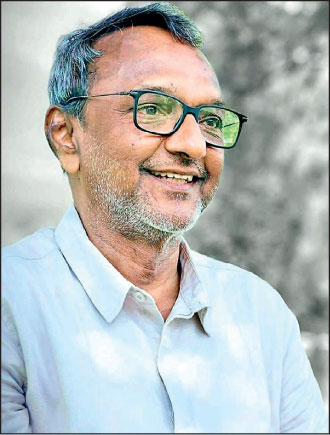 Last attempt to rectify SJB
Last attempt to rectify SJB
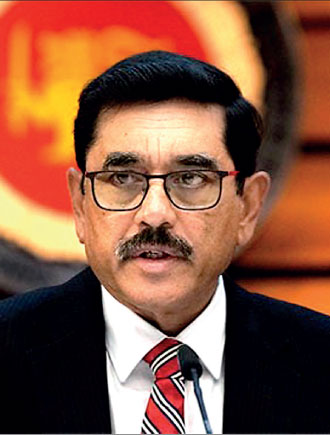 Out of the crisis, claims CB Tsar
Out of the crisis, claims CB Tsar
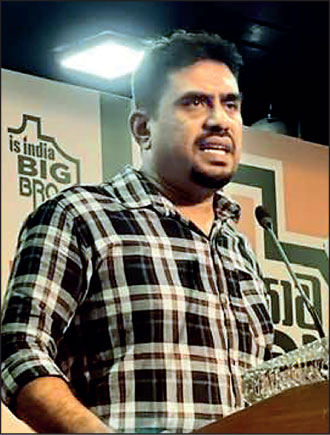 Left critique by FSP’s Duminda Nagamuwa
Left critique by FSP’s Duminda Nagamuwa
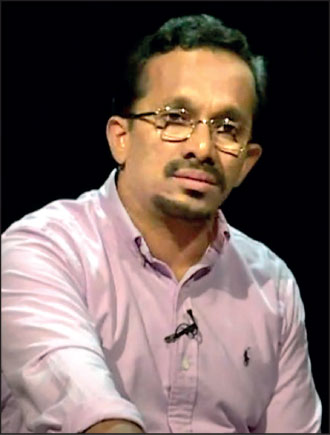 Industries Minister: Beijing absentee
Industries Minister: Beijing absentee

Wijeweera (in glasses) in 1970
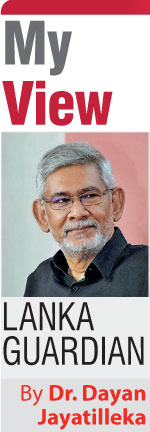 “There’s no sorrier sight than an unpopular populist” goes the old political science joke. As an old political scientist, I’d say that’s even truer of an unpopular “left populist”.
“There’s no sorrier sight than an unpopular populist” goes the old political science joke. As an old political scientist, I’d say that’s even truer of an unpopular “left populist”.
The Deep South, ‘Ruhuna’ is the JVP’s cradle. You can hardly get deeper south than Angunakolapelessa in Tangalle, Hambantota district, rice-growing territory. On the day that President Anura Kumara Dissanayake flew to Beijing, oddly enough without Industries Minister Sunil Handunetti, the NPP lost the Multi-Purpose Cooperative Society (MPCS) election in Angunakolapelessa to a coalition of SLPP and SJB elements and Mahinda Amaraweera’s supporters.
The NPP also lost a second the MPCS election in the South: Welivitiya-Divithura, Karandeniya, Galle District. That too was to a coalition of the SLPP, SJB and SLFP. In more urbanised Kelaniya, the SJB resoundingly beat the NPP at the MPCS election.
MPCS elections have always been the early warnings and symptoms of electoral standing.
Never has a Sri Lankan administration, especially one which swept the board recently, begun to lose elections so speedily at the grassroots, in diverse locations. What’s going wrong?
1. In their ineffable arrogance, Anura and the JVP-NPP spurned a united front under their leadership with dissident progressive political elements from former administrations. Therefore, they don’t have experienced personalities who know good, workable policies from bad ones; how the system works and how to work it; are familiar with processes and capable of skilfully guiding the machinery of state.
2. The JVP-NPP and its supportive intelligentsia hardly contain the best policy brains in the country. A Left-led united front could have mobilised such elements, as in the Left coalition Government of Kerala.
3. Consequently, AKD and the JVP-NPP neither have good, viable policies nor know how to deliver. In some basic respects (e.g., rice-coconut-salt) they compare unfavourably with their predecessors.
4. AKD-NPP swerved hard to the right on economic policy, implementing what they didn’t promise and the opposite of what they did promise.
5. NPP behaviour has been semi-authoritarian, and discourse, insensitive and imperious (e.g., Bimal’s supercilious sneering, Nalinda’s diatribe against Dullas, Harini sterner than Sirimavo).
Opposition model
The NPP’s triple defeats at the MPCS elections prove that the most viable Opposition strategy is of broad, flexible, cross-party, politically pluralist alliances, ranging from Sajith’s SJB to Namal’s SLPP and everything in-between.
Instead of peddling ‘SJB-UNP unity’, the effort in this 90th anniversary year of the legendary Popular Front (1935), must be to creatively construct the broadest, most inclusive, ideology-transcending, multipolar bloc/platform of the Opposition—a ‘domestic BRICS’.
Forget as national alternatives, Dilith Jayaweera and Champika Ranawaka, former comrades and two sides of the same coin. Also, Sarath Fonseka. AKD leads the JVP, a mainstream party with a long narrative history. Dilith and Champika may see themselves as Trump, Modi, or Netanyahu but those politicians are leaders of pre-eminent national parties: US Republicans, BJP, Likud. Dilith and Champika are strictly sect/cult-scale.
As the MPCS election results show, Sajith and Namal in whichever order will always be bigger players.
Because of their high-value, rolling public education activity on national policy, so too will the extra-parliamentary FSP-PSA.
Handunetti’s China absence
Prime Minister Dudley Senanayake’s Minister of Industries (1965-1970), Philip Gunawardena built Ceylon’s heavy industries by securing support from the socialist states. Philip, ‘the father of Ceylon’s Marxist movement’, was not an old comrade of liberal-democrat Dudley.
President Anura Dissanayake’s old comrade Sunil Handunetti, Minister of Industries, did not accompany AKD on his first visit as head of state to China, the chief potential source of investment for any serious, speedy program of industrialisation which is the only way to expand our exports and earn our exit from the debt trap (Howard Nicholas, Shiran Illanperuma).
As Chairman COPE and (later) co-host of Mawatha, the widely-watched TV show on economic issues, Handunetti’s role was hugely helpful to the JVP-NPP and AKD.
Deepfake ‘end-of-crisis’
It is one thing to express satisfaction over the stabilisation that has been achieved. It is quite another to claim as Central Bank Tsar Dr. Nandalal Weerasinghe does, that the crisis is in the rear-view mirror.
“…Speaking at the launch of the CBSL’s Policy Agenda for 2025 and Beyond, Governor Dr. Nandalal Weerasinghe emphasised that Sri Lanka has made a significant recovery after enduring its worst economic crisis in history…” (https://www.ft.lk/top-story/Sri-Lanka-stands-stronger-reforms-key-for-future-success-CBSL-Chief/26-771615)
“…As Sri Lanka has managed to brave through what was the worst economic crisis faced in history and moving towards normalcy, the island nation’s financial sector regulator yesterday said that its focus this year would be on achieving a “transformative acceleration” in the growth trajectory.”
Dr. Weerasinghe strikes a particularly Gotabayaesque note of “we did it the best of all” which flies in the face of the evidence that several other countries have secured much better terms of debt restructuring than Sri Lanka has.
“…He stressed that notwithstanding Sri Lanka’s faster-than-expected recovery compared to other countries that faced similar situations…” (Ibid)
The masterclass in deconstructing AKD’s debt deal was the Kegalle lecture by the Educational Secretary of the Frontline Socialist Party who formerly held the same post in the JVP, Pubudu Jayagoda, civil engineer and member of the People’s Struggle Alliance (PSA). (https://www.youtube.com/watch?v=t0QYL5gn3Y0)
AKD’s debt deal hasn’t kicked the can of repayment down the road to 2028. Nandalal Weerasinghe confirms Dhanusha Pathirana’s counterview that repayment starts in 2025 and amounts to a whopping US $ 5 billion this year.
‘Sri Lanka is building its foreign reserves to cover its debt obligations of $ 5 billion for the next 12 months, as foreign inflows in 2025 will create a healthy liquidity in the domestic foreign exchange market, Central Bank Governor Dr. Nandalal Weerasinghe said.
“…our obligation is $ 5 billion for the next 12 months. If we had $ 10 billion, sufficient cover for the next two years, we would have sufficient cover,” he told Central Banking.’
Nandalal Weerasinghe’s remarks prove that:
 Sri Lanka’s debt obligation is $5 billion in the next 12 months.
Sri Lanka’s debt obligation is $5 billion in the next 12 months.
 The figure of $10 billion reserves is purely aspirational.
The figure of $10 billion reserves is purely aspirational.
 Sri Lanka does not actually have the reserves to safely absorb the outflow of $ 5 billion.
Sri Lanka does not actually have the reserves to safely absorb the outflow of $ 5 billion.
It’s the debt trap, stupid
We are not out of the crisis nor have we headed towards the exit ramp. We have simply moved from one stage of the crisis (default) to another (unconscionably excessive repayment).
Mahinda Rajapaksa was the first to resort to ISBs but repaid that debt in full (as Pubudu Jayagoda concedes). Thus, the debt crisis is just over five years old, beginning with the ISB surge in the last days of the hybrid Yahapalanaya administration (2015-2019) in which Ranil Wickremesinghe and the UNP – which included today’s SJB economists–ran economic and financial policy. That ISB surge is still defended by the SJB. The debt crisis encompasses the Gotabaya Rajapaksa and Ranil Wickremesinghe presidencies and now the Anura Dissanayake presidency.
President Dissanayake could have bought himself time and space by constituting a blue-ribbon panel of the top Sri Lankan economists here and abroad, supported by a scaffolding of renowned international economists sympathetic to Sri Lanka on the debt issue, to scrutinise the terms of the Ranil-bondholder ‘agreement in principle’ of August-September 2024 and provide within a compressed time-frame, perhaps as the outcome of a week’s conference in Colombo, a menu of options and a roadmap. Anura chose NOT to do that, and to sign-off instead on Ranil’s debt deal– the economic equivalent of the latter’s treacherous CFA with Prabhakaran.
The current crisis is the combination of an inherited, 5-year-old debt crisis plus the consequences of Ranil’s bad agreement which Anura is implementing when he could have deferred or partially deflected it.
A single, axial, debt crisis running from at least 2019 to now and through to 2030 and beyond, has serious implications.
Given the continuity of the economic crisis with the debt crisis at its core, the same structural factors and dynamics that underlay the administrations since 2019 also underlie the Anura Dissanayake administration.
Though the political leadership and the government have changed, the underlying reality of the crisis hasn’t, and that reality being a larger determinant than the Governmental change, we are still living in the same period of history; a period bearing the same character or nature.
President Dissanayake didn’t even attempt a revisionist or reformist approach towards the ISB-IMF framework inherited from Ranil Wickremesinghe.
Sri Lanka’s debt repayment crisis will be hugely compounded by the shocks to the international economic and political order that will be dealt by the Trump administration. The national crisis will be compounded by the international crisis.
The incoming Trump administration’s attempt to reverse the end of America’s unipolar hegemony will result in a period of disruption, conflicts and resistance. Sri Lanka’s crisis of the disastrous debt deal and the downstream effects of its working-out will be overlaid, reinforced and intensified by the disruptive global dynamics. This fusion of international volatility and the drain on Sri Lanka through unfair debt-repayment, will make our country one of the ‘weakest links’ in the chain of the world economy.
We remain in an uninterrupted “crisis process” which is open-ended. The economic crisis that triggered the Aragalaya has changed in its form but not its core content and will therefore manifest itself, not as the old Aragalaya, but in “two, three, many, Aragalayas” (if I may adapt Che Guevara’s indelible phrase “two, three, many Vietnams”). I am not saying the Aragalaya will return. I am saying Aragalaya in a generic sense, will. Insofar as the debt crisis is unfinished, so too is the Aragalaya. If the crisis is a process, so also is the Aragalaya.
SJB-UNP rapprochement?
Several influentials in the SJB and UNP identify themselves as ‘Centre-Right’ or downright Right. They believe that when the masses reject the ‘leftist’ JVP-NPP, the swing will be to the Right/Centre-Right. All it takes is for the SJB and UNP to merge or partner, unifying the ‘Right/Centre-Right’.
That’s hollow, because:
 Today’s UNPers and SJBers were one party till 2020—everyone belonged to Ranil’s UNP– while it never was elected to the Presidency, was repeatedly defeated including as an incumbent party (Feb 2018), and shed its vote base. Why would re-convergence yield a different, better result?
Today’s UNPers and SJBers were one party till 2020—everyone belonged to Ranil’s UNP– while it never was elected to the Presidency, was repeatedly defeated including as an incumbent party (Feb 2018), and shed its vote base. Why would re-convergence yield a different, better result?
 Despite Ranil’s peak achievement –stabilising the economy–he lost the presidential election convincingly, not even coming second. Reappointed UNP leader for 6 more years, he remains electoral Kryptonite.
Despite Ranil’s peak achievement –stabilising the economy–he lost the presidential election convincingly, not even coming second. Reappointed UNP leader for 6 more years, he remains electoral Kryptonite.
 Adding Sajith’s 32.76% and Ranil’s 17.27% in Sept 2024 is ridiculous because Ranil’s was not mainly a UNP vote but a ‘Gas Cylinder’ SLPP-SLFP defector vote which no longer exists or won’t return.
Adding Sajith’s 32.76% and Ranil’s 17.27% in Sept 2024 is ridiculous because Ranil’s was not mainly a UNP vote but a ‘Gas Cylinder’ SLPP-SLFP defector vote which no longer exists or won’t return.
 In its victories against the centre-left (1965, 1977, 1988/9) the UNP never called itself ‘rightwing’ or even ‘centre-right’. Ask Imthiaz Bakeer Markar whose active UNP history dates back to 1972. It was Ranil’s affiliation of the UNP with the IDU (global neoliberal/neocon Right) that distorted identity.
In its victories against the centre-left (1965, 1977, 1988/9) the UNP never called itself ‘rightwing’ or even ‘centre-right’. Ask Imthiaz Bakeer Markar whose active UNP history dates back to 1972. It was Ranil’s affiliation of the UNP with the IDU (global neoliberal/neocon Right) that distorted identity.
 An alliance with Ranil’s congenitally unelectable UNP cannot constitute a recipe for electoral success. It is a political oxymoron.
An alliance with Ranil’s congenitally unelectable UNP cannot constitute a recipe for electoral success. It is a political oxymoron.
SJB chairman Imthiaz Bakeer Markar, highly-respected across the political spectrum, has called for self-critical introspection and reform. (https://www.ft.lk/front-page/SJB-failed-to-create-a-political-force-people-can-trust-Chairman-Imthiaz-BakeerMarkar/44-771717). His two missives (12 points and 34 points) are an invaluable starting point, but don’t address the intractable syndrome the SJB suffers from:
 The SJB is uncertain of its loyalties as between its own leader (Sajith) and former leader (Ranil) even after the latter sabotaged the former and ensured AKD’s victory.
The SJB is uncertain of its loyalties as between its own leader (Sajith) and former leader (Ranil) even after the latter sabotaged the former and ensured AKD’s victory.
 The SJB was never sure whether its main identity was as the principal Opposition and its main goal was to win the upcoming election, or whether its main identity was as the agency of ‘free-market’ economic doctrine, and its main goal was to get the country to follow that economic ideology under whichever President (Harsha’s line).
The SJB was never sure whether its main identity was as the principal Opposition and its main goal was to win the upcoming election, or whether its main identity was as the agency of ‘free-market’ economic doctrine, and its main goal was to get the country to follow that economic ideology under whichever President (Harsha’s line).
 The SJB is unsure whether AKD should be praised (Harsha) or condemned (Sajith) for dumping his election pledges and taking Ranil’s road.
The SJB is unsure whether AKD should be praised (Harsha) or condemned (Sajith) for dumping his election pledges and taking Ranil’s road.
 The SJB doesn’t know whether it is a progressive centrist party of social democracy (Sajith, Imthiaz) or a centre-right/rightwing party of economic liberalism (Harsha-Eran).
The SJB doesn’t know whether it is a progressive centrist party of social democracy (Sajith, Imthiaz) or a centre-right/rightwing party of economic liberalism (Harsha-Eran).
 2024 was President Premadasa’s birth centenary year but the SJB failed to commemorate him though it would have boosted Sajith’s campaign in election year. Premadasa’s dramatically successful development doctrine was never imparted to the SJB. The party’s economic ideologues remain wedded to the vote-killing economic doctrine of Ranil Wickremesinghe they imbibed under his overlong, conspicuously unsuccessful leadership.
2024 was President Premadasa’s birth centenary year but the SJB failed to commemorate him though it would have boosted Sajith’s campaign in election year. Premadasa’s dramatically successful development doctrine was never imparted to the SJB. The party’s economic ideologues remain wedded to the vote-killing economic doctrine of Ranil Wickremesinghe they imbibed under his overlong, conspicuously unsuccessful leadership.
Left lines
In 1970 a centre-left United Front with a powerful left component was elected to office with a 2/3rds majority. In 2024 a left-populist movement driven by a Marxist party shifted to the centre and won a 2/3rds majority. The 1970 Government deviated rightwards and the UNP crushed it at the 1977 General Election.
The 2024 one has done likewise, pivoting more sharply rightwards– the ISB sellout—and adopting in an ultimate irony, the program of Ranil, son of Esmond Wickremesinghe, whose Shenoy-Suharto-Chicago Boys model triggered Wijeweera’s arming of the JVP in the late-1960s.
Left critiques of the 1970 UF government were of several types:
 Critical support from within by those (Wickramabahu, Vasu, Janavegaya Maoists) fearful of a break with the UF base; ‘unity-and-struggle’ constructive criticism from without, by those who demurred at rupture. Voters bypassed all vacillators in halfway-houses, embracing the Opposition UNP as the only clear-cut alternative.
Critical support from within by those (Wickramabahu, Vasu, Janavegaya Maoists) fearful of a break with the UF base; ‘unity-and-struggle’ constructive criticism from without, by those who demurred at rupture. Voters bypassed all vacillators in halfway-houses, embracing the Opposition UNP as the only clear-cut alternative.
 Frontal critiques from Trotskyists and Maoists – Bala Tampoe, N. Sanmugathasan–who had opposed the LSSP and CPSL shifts, national and international, to the right in 1964. Tamil-led, these had limited national traction.
Frontal critiques from Trotskyists and Maoists – Bala Tampoe, N. Sanmugathasan–who had opposed the LSSP and CPSL shifts, national and international, to the right in 1964. Tamil-led, these had limited national traction.
 Breakout to the Opposition (1972) by CPSL icons SA Wickremesinghe and Sarath Muttetuwegama, supported by the ATHTHA newspaper. Soviet pressure restored party unity, disastrously– the lesson being, never let anyone else’s foreign policy be your domestic policy. Mao, Ho and Fidel never did.
Breakout to the Opposition (1972) by CPSL icons SA Wickremesinghe and Sarath Muttetuwegama, supported by the ATHTHA newspaper. Soviet pressure restored party unity, disastrously– the lesson being, never let anyone else’s foreign policy be your domestic policy. Mao, Ho and Fidel never did.
 Radical ‘New Left’ critiques from Wijeweera’s JVP and smaller organisations before and after the 1971 insurrection and its suppression.
Radical ‘New Left’ critiques from Wijeweera’s JVP and smaller organisations before and after the 1971 insurrection and its suppression.
Imagine if:
a. Wijeweera’s JVP had maintained its left critique of the UF Government without being provoked into adventurist armed violence.
b. The SA Wickremesinghe-Sarath Muttetuwegama wing of the CPSL (so-called ‘hardliners’) remained in the Opposition and evolved into the equivalent of Kerala’s CPI-M.
c. Vasudeva-Wickramabahu-Vama SamaSamaja had broken away in 1972-3.
Any of these political options—better still, a combination–may have achieved one of four outcomes:
 Repeat the 1953 Hartal uprising when mass economic hardship was acute from 1973 (e.g., the ban of rice transport) or take the 1976-1977 nationwide students’ revolt-railway strike-General Strike to the next level.
Repeat the 1953 Hartal uprising when mass economic hardship was acute from 1973 (e.g., the ban of rice transport) or take the 1976-1977 nationwide students’ revolt-railway strike-General Strike to the next level.
 Compete with the UNP as Left alternative in 1977.
Compete with the UNP as Left alternative in 1977.
 Be the main Opposition in the 1977 Parliament.
Be the main Opposition in the 1977 Parliament.
 Form a strong Left Opposition in the 1977 Parliament.
Form a strong Left Opposition in the 1977 Parliament.
As a ‘thought experiment’, reprise Rohana Wijeweera’s political and ideological line of the 1970s towards the UF government, MINUS the armed violence. That would have been the correct line then. That would be the correct line now.
The 1970s prove that if the Left doesn’t provide a clear alternative early enough to a Centre-Left government turned rightwards and economically hurting the people, the Right will succeed it. The Left has to seize the banner of anti-government struggle and lead it.
[For my electronic archive, visit: https://dayanjayatilleka.webflow.io/]





